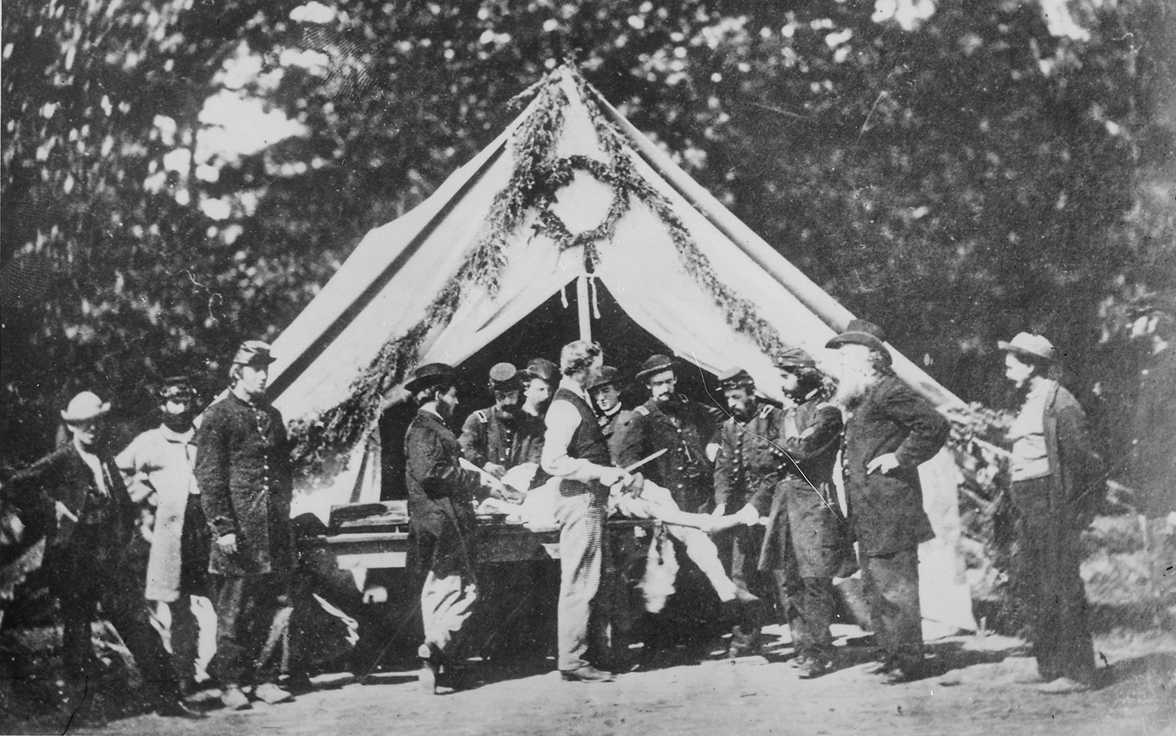
A portrait of a Civil War field hospital in 1863, written by a Union colonel wounded at Port Hudson:
I never wish to see another such time as the 27th of May. The surgeons used a large Cotton Press for the butchering room & when I was carried into the building and looked about I could not help comparing the surgeons to fiends. It was dark & the building lighted partially with candles: all around on the ground lay the wounded men; some of them were shrieking, some cursing & swearing & some praying; in the middle of the room was some 10 or 12 tables just large enough to lay a man on; these were used as dissecting tables & they were covered with blood; near & around the tables stood the surgeons with blood all over them & by the side of the tables was a heap of feet, legs & arms. On one of these tables I was laid & being known as a Col. the Chief Surgeon of the Department was called (Sanger) and he felt of my mouth and then wanted to give me cloriform: this I refused to take & he took a pair of scissors & cut out the pieces of bone in my mouth: then gave me a drink of whiskey & had me laid away.
In 1918, after a half-century of medical advances, one federal surgeon looked back on the war:
We operated in old blood-stained and often pus-stained coats, the veterans of a hundred fights. … We used undisinfected instruments from undisinfected plush-lined cases, and still worse, used marine sponges which had been used in prior pus cases and had been only washed in tap water. If a sponge or an instrument fell on the floor it was washed and squeezed in a basin of tap water and used as if it were clean. Our silk to tie blood vessels was undisinfected. … The silk with which we sewed up all wounds was undisinfected. If there was any difficulty in threading the needle we moistened it with … bacteria-laden saliva, and rolled it between bacteria-infected fingers. We dressed the wounds with clean but undisinfected sheets, shirts, tablecloths, or other old soft linen rescued from the family ragbag. We had no sterilized gauze dressing, no gauze sponges. … We knew nothing about antiseptics and therefore used none.
In The Life of Billy Yank, historian Bell I. Wiley writes, “Little wonder that gangrene, tetanus and other complication were so frequent and that slight wounds often proved mortal.”
